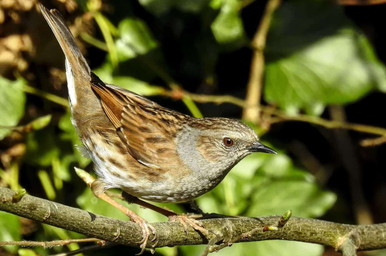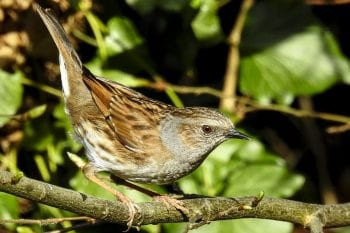Kennedy Wild Bird Food Guide to the Dunnock aka Hedge Sparrow
The Hedge Sparrow is a small brown bird that can be found all over the UK and is commonly referred to as a Dunnock. They are very similar in size to the robin and are known as being shy, reserved birds. You might find them lurking around your flowerbeds. In this guide, we’ll cover some of the most interesting Dunnock bird facts, including where you can find them, what they look like and what exactly you should be feeding them.
What does The Hedge Sparrow look like?
Dunnocks are small birds around 14 cm in length and have a wingspan between 19-21 cm. Male and female Dunnocks are very similar in appearance. They are both streaky-brown with a grey neck and breast. However, male Dunnocks often have a slightly darker head colour which you might be able to spot if they are together. Dunnocks are also similar in appearance to house sparrows, as you can see from the pictures below (Dunnock/hedge sparrow left - house sparrow right).

What does The Dunnocks eat?
They are known to eat a wide range of foods, including spiders and worms - hence why you might find them rummaging around in hedges. They also love to eat seeds, such as our wild bird seed mix. Mixed seeds are a great, nutritious choice that can attract a huge variety of birds to your garden - including the Hedge Sparrow!Where do they live?
They can be spotted all over the UK. In fact, there are over 2.3 million breeding territories across the UK. Dunnocks are often seen hopping around flower beds, bushes and hedges - hence their name, Hedge Sparrow!What does the Hedge Sparrow sound like?
The Dunnock’s song is a short and fast warbling that lasts for around 3 seconds in total. Have a listen to the clip below to see if you’ve ever heard a Dunnock singing in your garden! Click here to listen Dunnocks are known for their active breeding habits that differ very much from other birds. Female Dunnocks sometimes have multiple partners in hope that they’ll both help to take care of her chicks. However, males have become wise to this and are known to peck at the female's cloaca to encourage her to reject the sperm. You will often find a Dunnock nest on low land, usually in a bush or conifer. Dunnock’s eggs are a bright blue colour and they are known to lay between three and five at one time. If you spot a dunnock hopping around in your garden, don’t forget to log it on our Birdspotter map!
